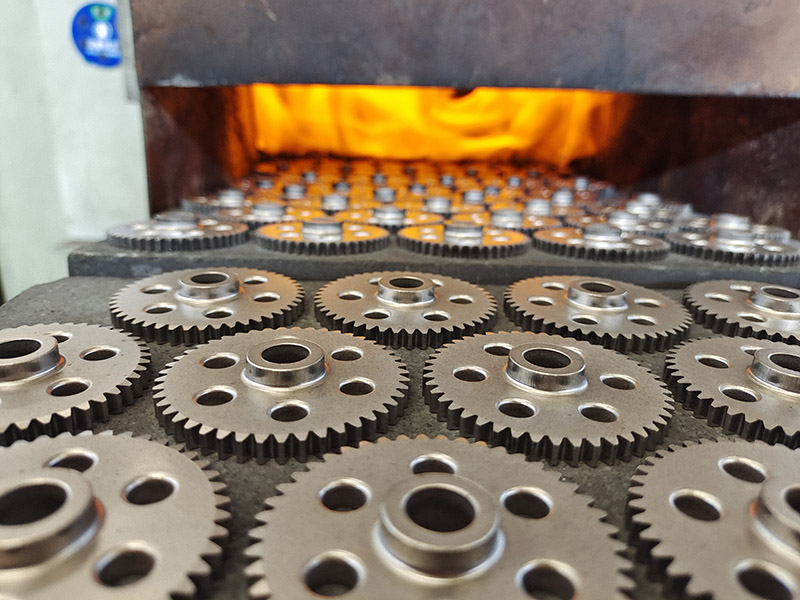Powder metallurgy sintering hardening is a process that combines sintering and heat treatment, that is, after a certain material is sintered and rapidly cooled, martensite (usually >50%) is generated in the metallographic structure, so that the material is in production Play a more effective role and improve economic efficiency.
The advantages of sintering hardening:
1. The heat treatment process can be omitted
2. Avoid the pollution of quenching oil
3. Easy to temper in the air
4. Reduce product deformation
5. Improve size control
6. Improve economic efficiency
7. Application of sinter hardening
Powder metallurgy sintered hardening materials are generally used to manufacture medium and high density parts. At present, the sinter hardening process is mainly applied to products that are difficult to quench due to size and shape. Such as gear parts, synchronizer hubs, special-shaped or thin-walled knots and other structural parts. In summary, iron-based powder metallurgy sinter hardening is one of the most effective means to replace powder metallurgy heat treatment processes, and its advantages outweigh its disadvantages. Choosing suitable materials for sintering and hardening can not only avoid the adverse effects of heat treatment and reduce costs, but remember that the products after sintering and hardening must also be tempered in time, usually at a tempering temperature of about 180°C.
Post time: Nov-05-2021

